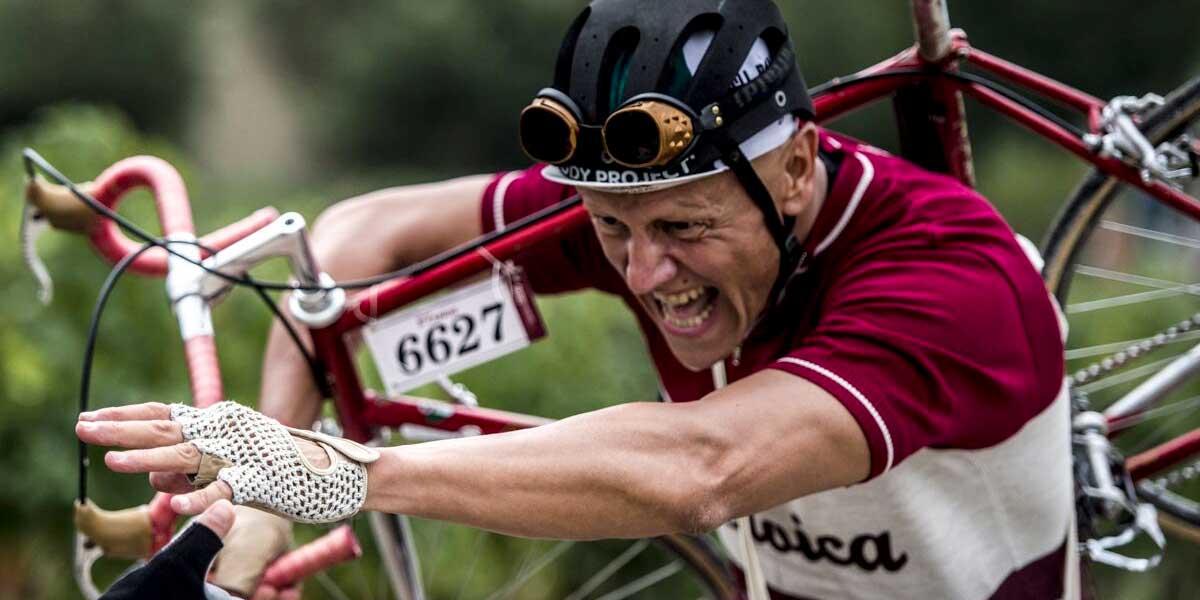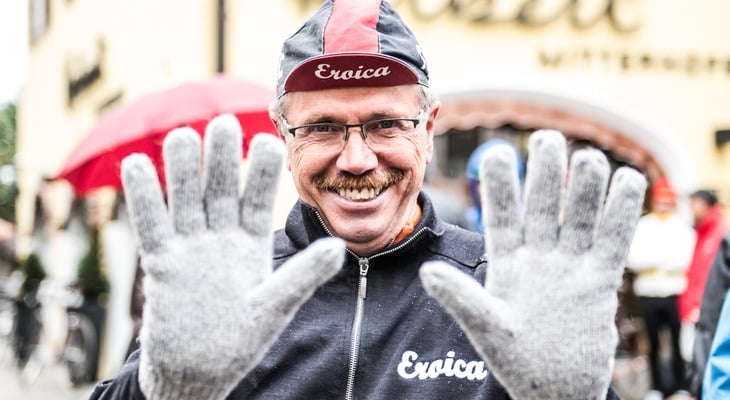The ‘which came first’ chicken-and-egg dilemma may also exist between newspapers and cycling races.
Those of us who have read some historical cycling books know that it was the derby between Giffard’s Le Velo and Desgrange’s L'Auto that determined the troubled birth of the Tour de France. Almost the exact same thing happened with the Corriere della Sera and the Gazzetta dello Sport, whose editorial offices competed in the sprint for the first Giro d'Italia. The success of that pioneering sports enterprise was decisive in affirming the respective newspapers, whose pages, in time, lent their colours to the leaders' jerseys.
Newspapers were used to combat the sun and the freezing wind, they were turned into hats and protected stomachs on the mountain passes, the newspapers of Paolo Conte's Bartali that will flutter forever. Newspapers told stories of legend, epic and myth, when races were something of a mystery, except for the finish and whatever whispered tales were heard on the edges of the group. The rest was imaginative but it made generations of modest people happy, people who were formed by the hard work of survival, who badly needed dreams and heroes, extracted, like them, from fatigue, sweat and blood, mud and dust.
The newspapers fought to patronize events and put their mark on races. They divided up an array of events, often inventing them themselves. They were filled with the advertising requested by the cyclists, the pagan idols whose need and ability to eat and drink copious amounts became indispensable in achieving their incredible feats.
L'Eroica owes its birth to newspapers. As a child in the Barrino in Gaiole in Chianti, the old people began asking me to read for them more and more often. The cycling pages were the most requested every Monday, especially during the Giro and Tour. Old newspapers became the instruments of my research, which began after 1995, when I got to know Gino Bartali better, dedicating a Gran Fondo to him. Re-reading the papers recounting the sporting duel of the century between Gino and the other part of the same legend, a certain Fausto Coppi, was fantastic, to call it exciting does not fully render the idea.
This is how L'Eroica was born, from that echo, from the fine dust that is found in libraries, that unmistakable smell that is dispersed every time we leaf through ancient pages.
My own personal passion for cycling was fruit of the learned literature that the great writers of the twentieth century dedicated to the heroes who faced the elements, the giants of the road, whose insane passion led them to take on superhuman feats and the kind of suffering inflicted only in penal colonies. Newspapers were also companions of the first Eroicas. There were only a few of us, but we were special even then, although we were more interested in nostalgia, collecting figures and memorabilia, than in getting back to the era of cycling feats, to the idea that this type of cycling was no longer just the stuff of archives, bookshelves and old film clips. We organized some splendid, unique events, with the help of many sincere enthusiasts, whom I thank again. Today L'Eroica is overflowing, flooding the banks of nostalgia, heroic cycling is back on the cards for pro cyclists, gravel roads have given a technical element to the cycling of the future, a trend that is being copied around the world.
Now that we are strong with a large and growing community, we must get back to reading and writing about cycling, because it has determined and recounted so much history at the highest levels. A Ciclo Club Newspaper, open to the most varied collaborations and to new and attentive readers, may seem incredible in this day and age but so many amazing people are waiting for it with bated breath!

















